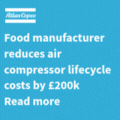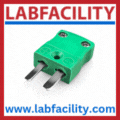
Posted to News on 14th Apr 2015, 15:08
Meeting the new efficiency standards for power drive systems
Improving the efficiency of electric motors has been an on-going objective across the world, with several standards now in place to help achieve this goal. However, it is generally recognised that a broader view is needed to fully maximise the efficiency of the entire drive train. This requires engineers to take account of the efficiencies of the starter systems, as well as the equipment attached to the motor; which has led to the introduction of a new standard, EN50598. Yasar Yce, Product Manager at Bauer Gear Motor, looks at the reasoning for the new standard as well as the implications for manufacturers and end users.
From 1 January 2015 the latest efficiency regulations for electric motors came into force in Europe under Regulation 640/2009, whereby any new installation using a motor between 7.5kW and 375kW must use either an IE3-rated motor or an IE2 motor installed with a variable frequency drive (VFD). This approach is focussed on improving the efficiency of a specific product and reducing the losses associated with it alone.
Specifiers and end users need to decide which combination will provide the most efficient option for their application; an IE3 motor has a clearly specified efficiency rating at its rated speed and at 50 per cent, 75 per cent and 100 per cent load. An application which requires variable speed adjustments and different loadings cannot be evaluated at present with the available product performance data. A specifier or an end user is currently unable to compare the different competitive components of the drive system and finally choose the most efficient motor and inverter components.
A similar situation arises when the motor is integrated into a product, such as a fan or a pump, where the motor's performance cannot be measured independently from the product. In order to address these situations and to improve the potential energy savings in these areas, a new standard, EN50598, is being developed which benchmarks the efficiency ratings of power drive systems (PDS).
EN50598-1 sets out the general requirements for setting energy efficiency standards for power-driven equipment using the extended product approach (EPA), and semi analytic model (SAM). This essentially covers the combined efficiency ratings for the PDS and the driven equipment such as the pump, gearbox, compressor etc.
EN50598-2 will widen the focus from a single component to the efficiency of the complete power drive system (PDS). The new efficiency classes (IES) provide a structure that allows the losses for a complete drive system to be compared. The median range is IES1, and systems with losses 20 per cent higher than that of IES1 are classed as IES0. More efficient systems, with energy losses 20 per cent below IES1, are identified as IES2.
EN50598-3 provides a quantitative ecodesign approach through life-cycle assessment, including product category rules and the content of environmental declarations.
This new standard will also help end users to gauge payback periods more accurately. Previously, the overall efficiency of speed-controlled motors was estimated using rough energy consumption figures. Now, with verified efficiency curves, the payback period for a motor/drive combination can be calculated more realistically.
Transparent about efficiency
For manufacturers of variable speed drives there will be a requirement to provide losses data according to the part load measurement points as defined for the CDM system, while those producing motors or gear motors are not to be forced to provide the losses data at the specified part load. However, Bauer wishes to be transparent about the efficiency of its products and will be publishing the necessary data both in paper format and on its website.
This is in contrast to many manufacturers of complete power drive systems who will more than probably only be providing the IES rating of their equipment rather than the losses data relating to the individual components. Potentially this could leave a customer with a very efficient drive module that was connected to a considerably less efficient electric motor.
Bauer supports all customers, helping them to avoid dependence on system providers. They will have clarity of the loss data according to EN 50598 for all components, which allows them to calculate the total losses and, as currently, optimise their system, thus protecting their core knowledge.
In Bauer's case it started work on compliance with this new regulation shortly after the proposal was announced, back in 2010.
As a result, Bauer Gear Motor is one step ahead in terms of design and efficiency with its complete range of IE3 motors already in the marketplace, including all those between 0.75kW and 7.5kW which meet the regulations due to come into force in January 2017. All of the motors manufactured by Bauer are at least IES1 ready and its experienced engineers can provide expert assistance to end users and specifiers in the most appropriate equipment selection.
Bauer has also optimised its motors for use with inverters with both permanent magnet synchronous motors (PMSM) and asynchronous motors (ASM) having a 70Hz curve which allows these products to achieve an IES2 efficiency classification in combination with the Reference CDM for the power drive system under EN50598-2.
With the technology already in place, Bauer is contributing to improved energy efficiency and delivering plant and application optimisation. In order to enable customers to have a better understanding of the latest standards and how the Bauer products conform, it will be publishing the IES classes applicable to its IE2 & IE3 motors, in accordance with EN 50598-2. This information will be available on the Bauer website from early 2015 along with details of the efficiency ratings of its inverter-rated motors.
In this way customers will be able to ensure that they can specify the most appropriate components for each application and optimise the energy savings at the same time. Further assistance in this process will also be available from a team of experienced engineers that will offer expert advice on product selection.
The improvements in energy efficiency that can be gained through careful product selection will benefit not only end users but also OEMs. For many applications a smaller Permanent Magnet Synchronous Motor can be used in place of a larger Asynchronous motor, allowing smaller components to be selected through the complete energy chain.
Reduced operating costs
The OEM is able to promote improved efficiency for its equipment while also reducing the costs of many of the components. Furthermore, 30 per cent higher energy savings can be reached by use of the Bauer Permanent Magnet Synchronous Motors in comparison with asynchronous motor technology operating in standard applications under partial load conditions. The cumulative effect of the energy savings across a number of applications will reduce the total electrical demand for the premises, which in turn will reduce the operating costs of the whole site for the end user.
Changes that are being implemented by manufacturers will have a direct benefit to end users, especially those in industries that employ electric motors in continuous operations. For example, many applications in bulk materials handling, the food and beverage sector and metal processing as well as those in the automotive and logistics sectors are looking at optimising their energy expenditure. Similarly, water treatment and chemical processing plants will be able to identify the most efficient drive systems as part of their drive to reduce operating costs.
While the minimum energy efficiency ratings are tightened for the majority of motors, there are some exceptions - namely brake motors and those operating in potentially explosive atmospheres - that will retain their exempt status. However, Bauer is also leading the field with the development of the S series of PMSM which offers variable-speed motors in efficiency class IE4 for use in explosion hazardous areas.
Bauer welcomes the new standard and believes that it will provide end users with a far more accurate picture of the potential energy savings available from complete drive systems, rather than just the electric motor. It will also deliver a better understanding of life cycle costs for new equipment and its affect on the running costs of a facility.
To learn more about power drive systems and the new standard, EN50598, please visit www.bauergears.com.




